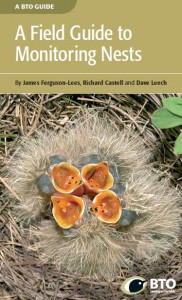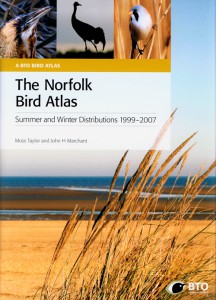A Field Guide to Monitoring Nests
 “The best of the nest”
“The best of the nest”
The introductory sections to this excellent guide cover current legislation, the BTO’s Nest Record Scheme and advice about finding and monitoring nests without affecting the outcome of the breeding attempt. Importantly, it also explains why there is a need to monitor nests. Along with survival rates, breeding success determines whether a species increases or decreases in population. Monitoring helps explain some declines and contributes towards the creation of conservation initiatives.
The bulk of the book is made up of species accounts in the traditional field-guide format, with one or two pages per species. A total of 146 breeding birds is included, with Schedule 1 species – rarer birds whose nesting sites cannot be approached without a licence – omitted. For each, there is a map, a summary of the dates when eggs and young can be found, colour pictures of the adult, eggs and newly hatched young, and details of breeding ecology and tips on the best methods for finding and monitoring nests.
The BTO hopes that this guide will encourage more birders to become involved in nest recording for conservation purposes. The numbers of nests being monitored has been dropping rapidly for some species, particularly open-nesting passerines, which could hinder efforts to understand why their populations are in decline. However, the comprehensive information covered in this guide will be of interest even if you do not want to take part in nest recording. It may even help to change your mind!
Ian Woodward
Birdwatch Magazine – September 2011
The Norfolk Bird Atlas
 “Accounting for Norfolk’s Birds”
“Accounting for Norfolk’s Birds”
Arguably the premier birding county in the country, Norfolk already has a detailed and highly readable avifauna to its credit. The Birds of Norfolk team of co-authors incuded county stalwart Moss Taylor, who links up in this new volume with the British Trust for Ornithology’s John Marchant to present the results of eight years of summer and winter mapping undertaken by an army of fieldworkers.
Surveying for the last Norfolk Atlas ended in 1985, so there was clearly a need for an update – a lot can and has changed in two decades. Geoffrey Kelly’s The Norfolk Bird Atlas also only covered breeding species, so this latest work adds significantly to knowledge of the county’s birds, with current winter distributions also fully mapped.
The premise, planning and methods are set out in full in 18 introductory pages which precede the meat of the book, the species accounts. Some 270 species are covered: those present year-round typically have three maps to show summer and winter ranges and changes since the previous atlas, while summer visitors have range and change maps, and those present only in winter or recently added as breeding species get a single map accordingly. The historical and current status of all are described informatively in an accompanying narrative.
There is a wealth of information to be absorbed from the accounts and maps, and to set the scene the reader could do worse than turn to John Marchant’s overview of Norfolk’s birds at the back of the book. Here, we learn among many other things that the county was home to about 900,000 pairs of breeding birds of 135 regular species during the survey period; that there were some 3.1 million wintering birds in the county of 183 regular species; that Woodpigeon was both the most abundant breeding and wintering species; that the county holds more than 50 per cent of the country’s breeding Marsh and Montagu’s Harriers; and that Red-backed Shrike, Wood Warbler and Winchat have all been lost as breeding birds since the last atlas, but up to 14 more species probably or definitely nested for the fist time in the same period.
All of this fascinating information is presented in a well-designed package, with double-page species spreads enlivened particularly by an excellent selection of illustrations and colour photos, many of the latter by David Tipling. Branded ‘A BTO Bird Atlas’, the format is presumably a template for a series of reinvigorated county atlases by the Norfolk-based Trust, which 20 years ago moved its headquarters to Thetford.
As gathering of data from observers becomes faster and more efficient through online schemes such as the BTO’s BirdTrack project, as well as through dedicated grid-based surveys such as this, it may be that the relevance of mapped atlases like Norfolk’s new tome will overtake that of conventional county avifaunas.
Dominic Mitchell
Birdwatch Magazine – August 2011
